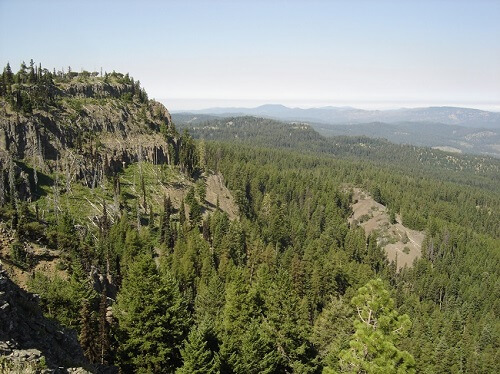Court officially rejects Ochoco National Forest motorized trail system.
Motorized trails through heart of old-growth forests and sensitive habitat ruled illegal
Prineville, OR—In a final ruling late yesterday, District Court Judge Marco A. Hernandez confirmed Magistrate Judge Patricia Sullivan’s September 2018 rejection of a U.S. Forest Service plan to add 137 miles of off-road vehicle trails in central Oregon’s Ochoco National Forest through old-growth forest. The plan would have expanded the Forest’s existing network of 674 miles by 20 percent. Judge Hernandez vacated the Forest Service’s environmental analysis and final decision for the trail system completely. This means if the agency wants to pursue expanding motorized use in the Ochoco’s old-growth forests and sensitive wildlife habitat, it will need to start from scratch.
WildEarth Guardians, Oregon Wild, Great Old Broads for Wilderness, and the Sierra Club, represented by the Western Environmental Law Center, prevailed in the case. Companion cases were also brought by the Oregon Hunters Association and Central Oregon Landwatch. The Oregon Dept. of Fish and Wildlife also opposed the plan.
Seven hundred miles of illegal OHV trails already mar the Ochoco National Forest. This new Summit Trail System would have rewarded illegal off-road use by adding 20 percent more trails without offering any additional enforcement, scarring important wetlands, wildflower meadows and old-growth ponderosa pine ecosystems. OHV use harms wildlife that inhabit and migrate through the secluded Ochoco Mountains, including Rocky Mountain elk, mule deer, redband trout, and gray wolves. The Forest Service had approved the project despite major opposition from the community and concerns from Oregon’s Department of Fish and Wildlife about harm to elk calving and security areas on the forest.
“This is a big win for the Ochocos. While we are thrilled that the courts came to the rescue, the long term solution for the Ochoco Mountains will require leadership from Oregon Senators Wyden, Merkley and Rep. Walden to craft a plan that better balances wildlife, clean water, recreation, and fuels reduction. This decision by the courts was good news for Oregonians who treasure the Ochoco Mountains, from landowners to anglers to hunters and hikers,” said Jamie Dawson of Oregon Wild.
“This decision recognizes the harm that motorized use has on fish and wildlife and their habitats, as well as non-motorized, quiet recreation.” said Judi Brawer, Wild Places Program Director at WildEarth Guardians. “It’s refreshing and hopeful to see our court system upholding bedrock environmental laws, especially at a time when the Trump administration is making every effort to knock them down.”
“This decision validates Oregonians who demand more from their government,” said John Mellgren of the Western Environmental Law Center. “Obfuscation of the significant environmental impacts of such a destructive project cannot be tolerated. The decision is a victory for transparency, reasoned government decisionmaking, and a healthier, more climate-resilient central Oregon.”
“This is a milestone for all who appreciate healthy fisheries and wildlife habitat in the Ochoco National Forest and beyond,” said Shelley Silbert, Executive Director of Great Old Broads for Wilderness. “Protection of watersheds and wildlife must be a top priority, along with full integration of input from the state wildlife agency and the community through an open and transparent process.”
The Forest Service now has 60 days to decide whether or not it will appeal the decision to the Ninth Circuit Court of Appeals. Oregon Wild wrote a report on OHVs in the Ochoco, which is available here.


